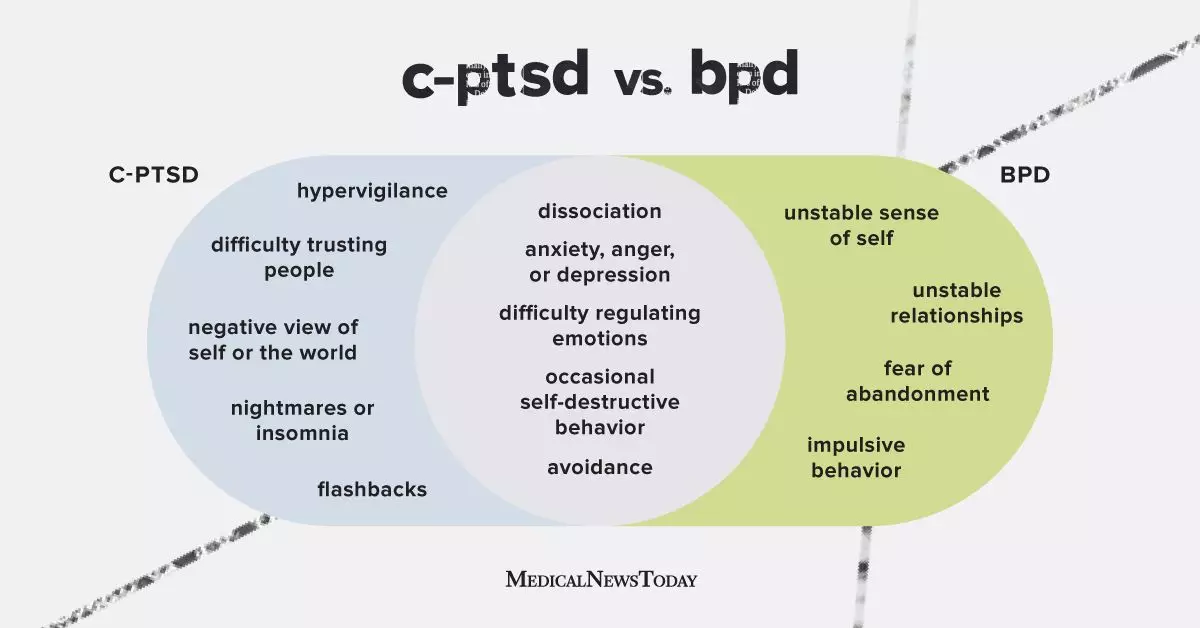Complex post-traumatic stress disorder (C-PTSD) and borderline personality disorder (BPD) are two mental health conditions that are often misunderstood and sometimes misdiagnosed. While both conditions can stem from traumatic experiences, they have distinct symptoms and characteristics. It is crucial to understand the key differences between C-PTSD and BPD to ensure accurate diagnosis and appropriate treatment.
C-PTSD is a condition that arises from multiple or ongoing traumatic experiences, leading to symptoms such as nightmares, flashbacks, and difficulty trusting others. People with C-PTSD may struggle with forming relationships and regulating their emotions. On the other hand, BPD is characterized by unstable relationships, emotional dysregulation, and an unstable self-image. Individuals with BPD may experience extreme highs and lows in their relationships and have difficulty maintaining a consistent sense of self.
The diagnosis of C-PTSD and BPD requires a comprehensive evaluation by a mental health professional. Clinical interviews, assessments, and consideration of coexisting conditions are essential in determining the correct diagnosis. However, misdiagnosis can occur due to symptom overlap, lack of awareness about C-PTSD, gaps in memory, and comorbidity with other mental health conditions. It is crucial to seek a thorough assessment to receive an accurate diagnosis and appropriate treatment.
Treatment for C-PTSD often involves trauma-focused therapy, which helps individuals process traumatic memories and reduce their impact on daily life. While there are no drugs that cure C-PTSD, medications may be prescribed to manage specific symptoms such as depression or anxiety. On the other hand, the primary treatment for BPD is talk therapy, particularly dialectical behavior therapy (DBT). DBT helps individuals develop coping strategies for managing intense emotions and impulsive behaviors. While medications may be prescribed for BPD symptom management, their efficacy in addressing core symptoms is limited.
Individuals who have both C-PTSD and BPD may benefit from a combination of trauma-focused therapy, talk therapy, and medication. Trauma therapy can address the underlying causes of symptoms, while ongoing psychotherapy and medications can help manage symptoms long term. It is essential to work with a mental health professional to develop a personalized treatment plan that addresses the unique needs of each individual.
Persistent emotional distress, overwhelming sadness, anxiety, or anger may indicate the need for support and intervention. Intrusive thoughts, especially those of self-harm or suicide, require immediate attention from a mental health professional. It is crucial to seek help if you suspect you may have C-PTSD, BPD, or both, and to prioritize your mental health and well-being.
C-PTSD and BPD are distinct mental health conditions with some overlapping symptoms. Understanding the key differences between these two disorders is essential for accurate diagnosis and effective treatment. By seeking help from a mental health professional, individuals can receive the support and interventions needed to improve their mental health and overall well-being.

